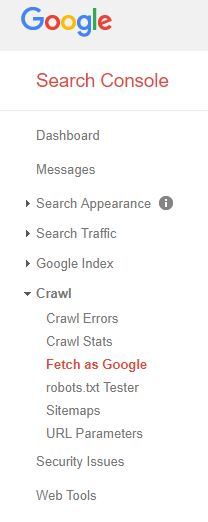Come on, raise those hands if you’ve ever felt that way 🙂
Yesterday, I had a friendly chat with a neighbor that got the wheels turning for today’s blog post. Sandy told me about getting coerced into creating a website a couple of years ago on candle making. Long story short, without proper training, she floundered around for a bit and quickly threw in the towel.
Here’s how Sandy summed up her primary question (read frustration). “If you put a website out on the Internet, how does anybody ever find it?” She’s still convinced there’s money to be made online. Aren’t we all? But she had no idea how to connect with interested readers.
You’re no doubt here today because you’ve experienced at least some of Sandy’s pain. Is that a fair assessment? So, my goal is to show you how to get real, targeted traffic for free and to grow that traffic over time.
Please stick with me for some traffic tips that work. And, when you get to the end, don’t be shy about adding your own tips in the comment section because we can all learn from each other. Deal?
Tips to Get and Grow Your Blog Traffic
Your goal of entrepreneurship and supplementing your income online is within reach, but once your blog is out there, you have to be laser-focused on attracting as many visitors as possible. Create checklists and routines around these tips to ensure you follow best practices on a regular basis and results will follow.
Spread the Word Through Social Media
Over time, I’ve acquired several thousand followers, and I derive significant exposure from these social signals. I tend to place particular emphasis on Google Plus because I’ve read speculation that Google tends to favor its own platform and may pay a little more attention to likes (+1s) on Google Plus.
My practice is to post both to my own profile page on Google Plus and to several groups. I always include the featured image, the meta title, and the meta description from each blog post along with a link back to my site. Based on checking my Google Analytics account, the traffic response is instantaneous for each posting, so it seems to make sense to maintain this routine.
Give a Shout Out to Google
If your website is indexed, Googlebot will find you eventually. But hey, why not speed up the process and attempt to force the issue if you can. Especially for new websites, it can often take a while for Google to find your new content on their own.
To maximize traffic, I think we can all agree that it’s best to have all of our content visible in search as soon as possible. Consequently, I always take advantage of the “fetch” command immediately after posting and sharing on Google Plus.
If you haven’t yet created your account, I strongly recommend that you follow this link to create a Search Console Account now.
What is Google Search Console?
Search Console is a free Google service that all website owners should use to monitor their site’s performance in Google Search results. As discussed above, you can submit new content for crawling. But the uses for this service are far more expansive.
You can also detect and fix any crawl errors and ensure your site remains clean by resolving any malware of spam issues. Perhaps most importantly, you can track your site’s performance in Search by viewing all search queries, impressions or clicks identified by Google.
Share Your Sitemap Frequently
A website sitemap is a listing of all pages included in your site that are accessible to users or search engines. I use a plugin called Yoast SEO to assess the SEO friendliness of my site. One of the functions of an SEO plugin is to prepare and maintain your sitemap.
Note the Sitemaps command positioned under Crawl in the Google Search Console Dashboard shown above. Resubmission adds roughly one minute to your publishing strategy. So, why would you let your new creation that’s bound to be a fan favorite remain hidden?
What Needs to Happen First – You Can Do This!
The three steps detailed above including social sharing, using the Fetch as Google command, and regularly resubmitting your sitemap to Google can be highly effective in enhancing the visibility of your content which tends to have a highly positive impact on website traffic.
But there are some crucial considerations before you hit the publish button that I would be remiss not to point out.These factors have to do with the nature, quality, and structure of your blog post content. In a nutshell, you’ll want to refine your content first by emphasizing the needs of both your target readers and the search engines.
Let me explain that statement further.
Make It Relevant and Learn to Listen
Successful websites are built around specific topics that cater to the informational needs of a group of individuals typically called a niche. It’s essential to study your niche and learn their pain points. Most audiences are crying out for help with something they’d ideally like to learn right now.
You need to understand the language your audience uses. In other words, what information do they want to know and what questions are they asking when they resort to a Google search box?
Keyword tools provide critical windows into the phrases people actually type when seeking information on your topic. Incorporating keywords into your content gives you the best chance of capturing reader curiosity and also surfacing when your potential audience performs searches.
Your articles must be thorough and highly relevant to readers. So, we have to listen to questions raised in forums, articles we read, emails we receive, or even queries from neighbors like Sandy 🙂 Seek to understand and empathize!
Then practice your craft and hone your writing skills. You know, procrastinate less and write more!
SEO (Search Engine Optimization) Matters
A discussion of SEO techniques is beyond the scope of this post. But if you’re interested in further information on this critical topic you can see it in the posts listed below.
- What is a Search Engine Optimization Strategy? So Important!
- How to Rank My Website With SEO Basic Principles
Do You Have All of the Training and Resources You Need?
As a relatively new blogger, the challenges of growing your website can seem a little overwhelming. If you’re feeling as though you could benefit from additional training in things like getting more traffic, keyword research, creating relevant content, or SEO, you may want to consider joining an online platform that has all the training and resources you could possibly need.
The training facility I recommend is called Wealthy Affiliate. I’ve been a premium member for about a year and a half now, and I can tell you it’s amazing. One of the things I like best about the program is that they offer a free Starter Membership that allows you to thoroughly check the place out before you make any commitments.
You can read more about the advantages of Wealthy Affiliate here. And if you haven’t yet started your blog, they have you covered there as well. You can build a website from scratch with your free membership and see if blogging is the right choice for you.
My Question For You
So, there you have my thoughts and tips on how to increase traffic to your blog.
Just to quickly recap:
- Focus on writing highly relevant content that is optimized for the search engines.
- Share your content on social media platforms with a special emphasis on Google Plus.
- Always use Fetch as Google.
- Resubmit your Sitemap on a frequent basis.
Finally, my all-important question for you is, are you regularly following all of these steps? Please comment below and tell us what changes you may need to make 🙂
Like It? Please Share It!
If you found this helpful, will you spread the good word?
May your traffic increase by leaps and bounds!







Hello Linda
Thanks so much for sharing your tips on increasing website traffic. This is what most bloggers struggle with, you have an”award winning post” but no one is reading it and you do not know how to get people to read it.
Another mistake many bloggers make, especially those new online, is writing a post without finding low-hanging fruit. In other words, taking keywords that are way too competitive.Would you agree that it’s good to find less competitive keywords?
Now on to something you mentioned in your post that is not clear to me. What is resubmitting a site map? Where is that sitemap supposed to be on my blog and how do I know it`s time to resubmit?
Thanks so much, this was really informative and helpful
Hi Roamy,
You make a very good point about searching out less competitive keywords. It’s much easier to rank for a keyword if there aren’t already a large number of posts out there on the subject. And ranking high in the search engines will certainly boost your traffic.
The sitemap for your website is an index of all of your content and images. It’s generated by your SEO plugin. I use Yoast SEO but many site owners use All-In-One. The sitemap is stored in an xml file. You can readily submit your sitemap in Google Search Console using the Sitemaps command in the dashboard. Again, I resubmit my sitemap after every post I publish because I think it encourages Google to crawl my site more often and include my content in search results on a more timely basis.
I recommend you give this step a try. Thanks for your comments!
I am glad to have found this article. I am going to take your advice. I am a newbie so I need all the help I can get.
Hi Valecia,
Glad I could help. Gaining traffic for a new blog takes persistence but your work will pay off. I wish you every success with your new venture.